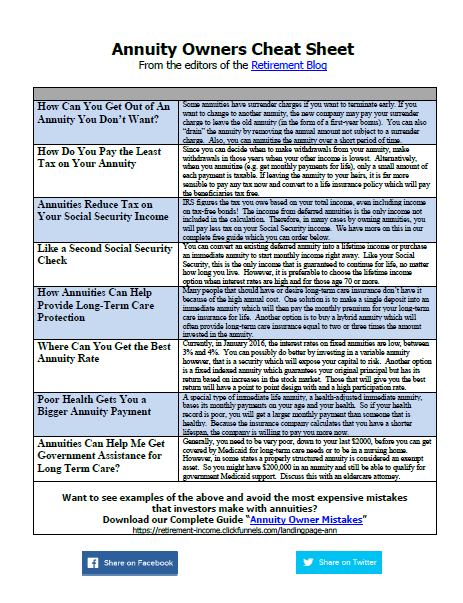The nice part about a traditional fixed annuity is that the insurance company guarantees its return and a constant payout upon annuitization. But with a long retirement ahead (most retirees live 20-30 years in retirement), you'll need some inflation protection to offset the fixed payout. Equity indexed annuities are a very complex investment but they can provide what you need. Should you consider equity-indexed annuities for the potential to offset inflation?
Equity indexed annuities are complex financial instruments that have characteristics of both fixed and variable annuities. Their return varies more than a fixed annuity, but not as much as a variable annuity. So Equity index annuities give you more risk (but more potential return) than a fixed annuity but less risk (and less potential return) than a variable annuity.
Equity index annuities offer a minimum guaranteed interest rate combined with an interest rate linked to a market index, such as the Standard and Poors 500 or NASDAQ 100. These contracts can potentially earn more than traditional fixed annuities when the stock market is rising. Yet, there is no risk to your principal when markets are falling because the of insurance company guarantee of principal. The purchase of equity indexed annuities should be considered a long term investment.
What's the Equity Indexed Annuities guarantee?
The guaranteed minimum annual simple return for an Equity Indexed Annuity is typically 2.7% simple interest. That would be the rate you would earn if the applicable stock market index did not appreciate during your contract term. But beware that if you surrender your Equity Indexed Annuity early, you may have to pay a significant surrender charge and you may give up your participation in any stock market growth that has already been earned. herefore, the purchase of equity indexed annuities is only appropriate when you can hold the contract for the full term.
How do Equity Indexed Annuities participate in the market index?
Equity index annuities credit interest using a formula based on changes in the index to which the annuity is linked. The formula decides how the additional interest, if any, is calculated and credited. Many equity index annuities use the S&P 500 but some allow investors to select one or more indexes. Typical linking methods are:
• Participation Rates where they may set the participation rate at 75%, so your annuity is credited with 75% of the gain experienced by the index.
• Spread/Margin/Asset Fee where a spread, margin or asset fee - in addition to, or instead of, a participation rate – is subtracted from index's gain before the remainder is linked to the annuity.
• Interest Rate Caps where they put a cap or upper limit on your return. So if the cap is 8% but the index gain is 10%, then only 8% is available for the annuity return.
Exactly how the index change is evaluated varies with the insurance company. Some measure yearly change at year's end, some from a specific time since beginning of the contract, some average the index change throughout the year.
Note that the insurance company cannot guarantee your principal AND give you 100% of the gain in the index. with equity indexed annuities, The trade-off to the investor is protection of their principal in return for giving up some of the upside appreciation.
Also insurance companies may change participation rates, cap rates, or spread/asset/margin fees either annually or at the start of the next contract term (while others will guarantee that these terms remain unchanged for the term of the contract, which we believe is preferable). So read your contract carefully to see if and when it allows the insurance company to change these features. Because of all these parameters for measuring gain, it's difficult to for a consumer to compare different Equity index annuities.
Note: If there is no increase in the underlying index during the designated term, equity indexed annuity investor receives only the minimum guaranteed rate minus expenses. Withdrawals during the vesting period may cause any and all gains not to be realized. The guarantee is subject to claims paying ability of the insurance company. The purchase of equity indexed annuities should be considered a long term investment. Withdrawals are taxed as ordinary income and withdrawals prior to age 59 ½ are subject to 10% penalty.

Leave a Reply